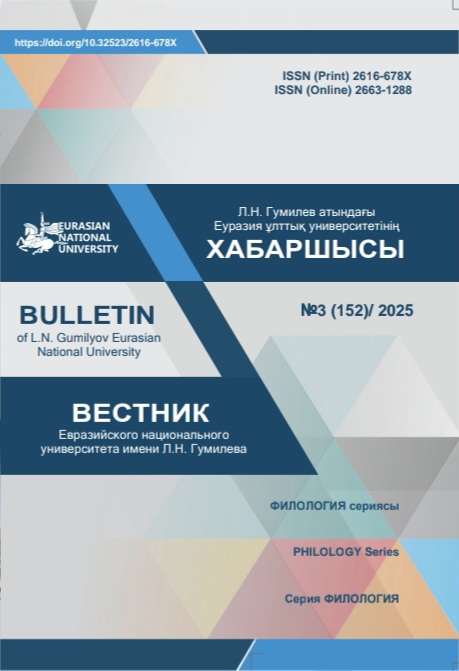The Esoteric Nature of Letters and Language in Nasimi’s Hurufi Poetics
Views: 225 / PDF downloads: 30
DOI:
https://doi.org/10.32523/2616-678X-2025-152-3-62-73Keywords:
Nasimi, Hurufism, muqattaʿat, abjad, letter symbolismAbstract
This article examines the esoteric function of letters and language in the poetic universe of Imadaddin Nasimi, situating his work within the symbolic framework of the Hurufi doctrine. The research identifies a total of 26 unique letter combinations used by the poet. Among these, 7 are muqattaʿat—disjointed letters found at the beginnings of certain Qur’anic surahs—and 19 are encoded combinations based on Hurufi principles. Each of these structures is analyzed from semantic, abjad (numerological), and esoteric perspectives. The study reveals that letters in Nasimi’s poetry are not mere linguistic units but sacred symbols embodying divine realities, metaphysical truths, and ontological mysteries. His usage of muqattaʿat letters infuses his poetry with Qur’anic resonance and mystical depth, while Hurufi codes reflect a synthesis of divine speech, cosmic order, and the Perfect Human (al-Insān al-Kāmil). Nasimi conceives of language as a tool of gnosis, where each letter serves as a gateway to inner truth. Through the mystical interplay of form, sound, and meaning, he constructs a symbolic system that bridges earthly and divine realms. Thus, the esoteric nature of language in Nasimi’s poetry positions him as a central figure in both the Hurufi intellectual tradition and the wider heritage of Islamic metaphysical thought.







